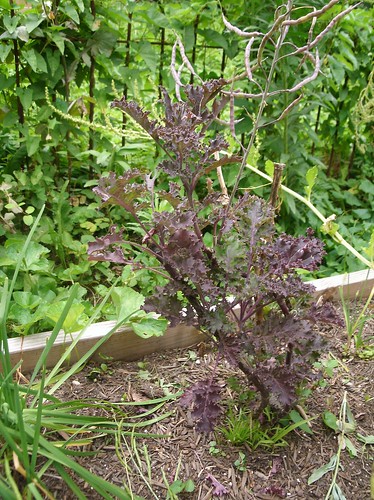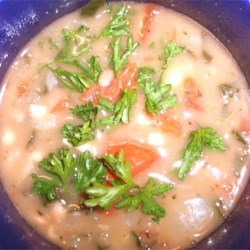Cropedia:Kale
Kale

Source: [1]
Years grown at UBC Farm/LFSOG: #
Growing conditions
- Kale is relative to cabbage that grows loosely in leaves rather than forming a head structure. Although kale have little biteer taste in flavor, it contains extraordinary rich nutrients (Smith 2010).
Kale can be grown in any kind of soils with good drainage. It requires full exposure of sun. To sow kale, you first draw a row or line in the raised bed soil that is no deeper than 1.5cm (0.5inch). Make sure to sow thinly so they have room to establish. Keep them moist. Thin and plant seedlings well, and water the kale well until they are fully established. Kale can taste better if it is affected by the frost. It can be harvested after approximately 28 to 32 weeks. To harvest, cut off the inner leaves.
Seasonality
- Kales can be sow in between March to May and harvest through September to March
Nutritional Information
- Kale is a rich source calcium, vitamin K, folic acid, magnesium, and beta carotene. It is especially recommended for those who are deficient in calcium (Smith, 2010).
| Nutrition Facts/Valeur Nutritive | |
|---|---|
| Serving Size: 50 g | |
| Amount Per Serving | %Daily Value* |
| Calories 250mL/71g | |
| Total Fat 0g | 1% |
| Saturated Fat 0g | 0% |
| Trans Fat 0g | |
| Cholesterol 0mg | 0% |
| Sodium 29mg | 1% |
| Total Carbohydrate 7g | 2% |
| Dietary Fiber 1g | 5% |
| Sugars 0g | |
| Protein 2g | |
| Vitamine A | 206% |
| Vitamine C | 134% |
| Calcium | 9% |
| Iron | 6% |
| * % Daily value based on a 2000 calorie diet | |
Recipes
- Bean Soup with Kale

Ingredients
1 tablespoon olive oil or canola oil 8 large garlic cloves, crushed or minced 1 medium yellow onion, chopped 4 cups chopped raw kale 4 cups low-fat, low-sodium chicken or vegetable broth 2 (15 ounce) cans white beans, such as cannellini or navy, undrained 4 plum tomatoes, chopped 2 teaspoons dried Italian herb seasoning Salt and pepper to taste 1 cup chopped parsley
Directions
In a large pot, heat olive oil. Add garlic and onion; saute until soft. Add kale and saute, stirring, until wilted. Add 3 cups of broth, 2 cups of beans, and all of the tomato, herbs, salt and pepper. Simmer 5 minutes. In a blender or food processor, mix the remaining beans and broth until smooth. Stir into soup to thicken. Simmer 15 minutes. Ladle into bowls; sprinkle with chopped parsley (Carper, 2004)
Additional usage inventory
- Ornamental kale in blossom can be used for decorative purposes. Kale leaves have varieties of white, red, pink, lavender, blue or violet in the interior or the rosette.
Academic connections
- Note 1
References
- Smith, S.E. (2010, April 02). Wisegeek. Retrieved from
http://www.wisegeek.com/what-is-kale.htm
- Carper, J. (2004). All Recipes. Retrieved from
http://allrecipes.com/Recipe/Bean-Soup-With-Kale/Detail.aspx
Additional notes
- Kale is extremely popular in ancient Rome, and in Rome, which has been cultivated for over 3,000 years. Since kale can be easily grown, and it is tolerant to cool climates, it was sometimes the only vegetable eaten in medieval times (Smith, 2010). Kale is suitable to garden in almost any part of the world (Smith, 2010)!